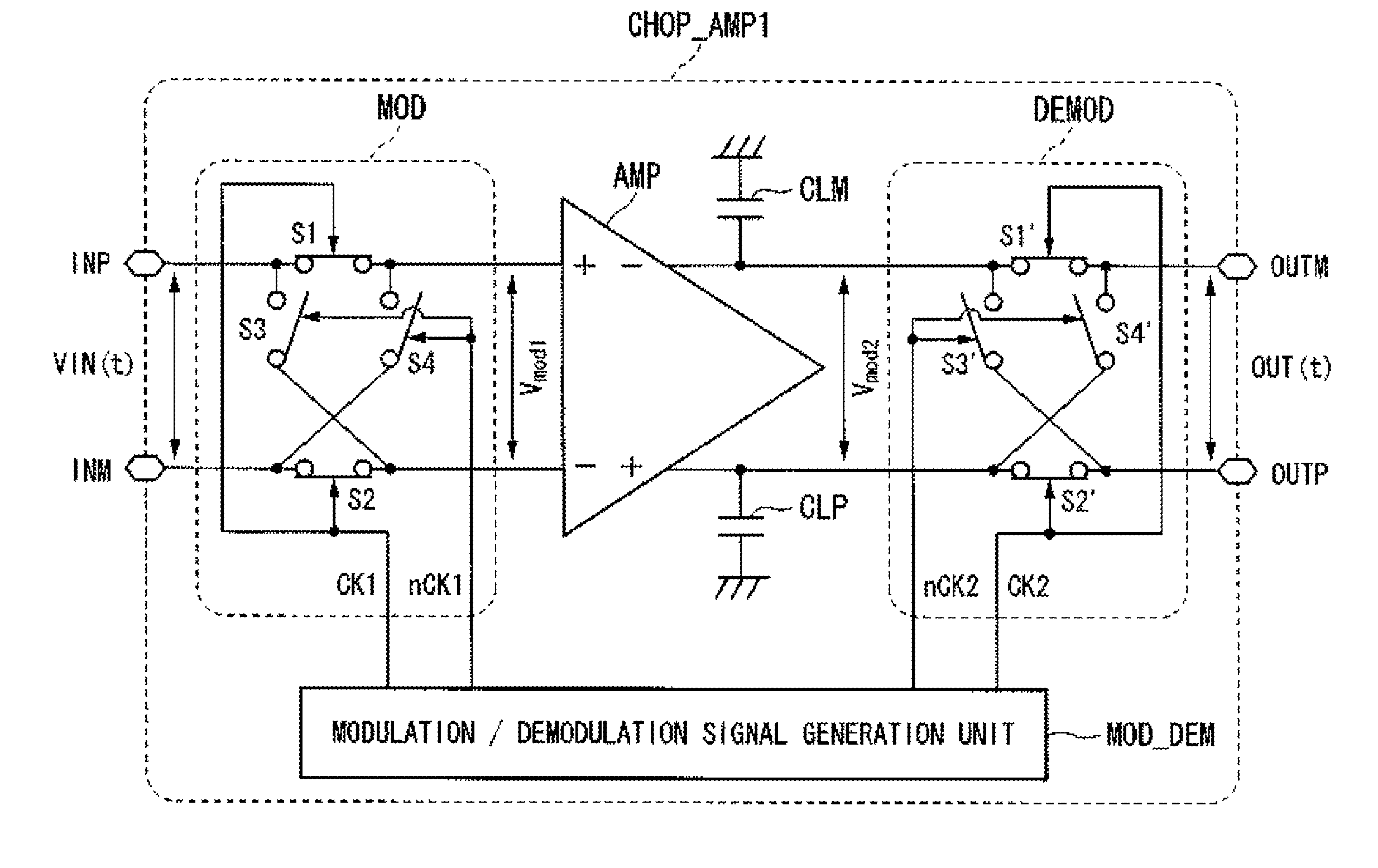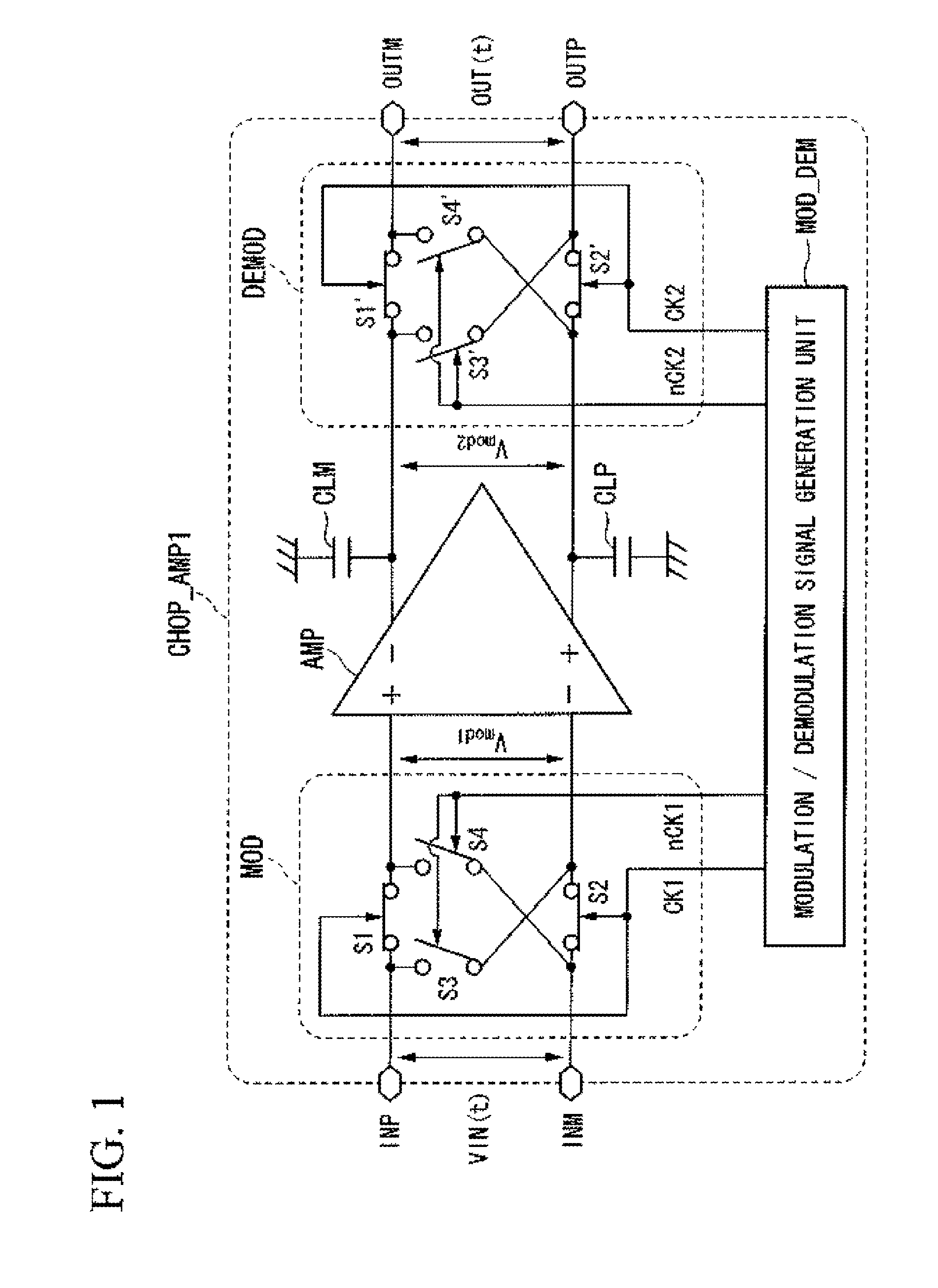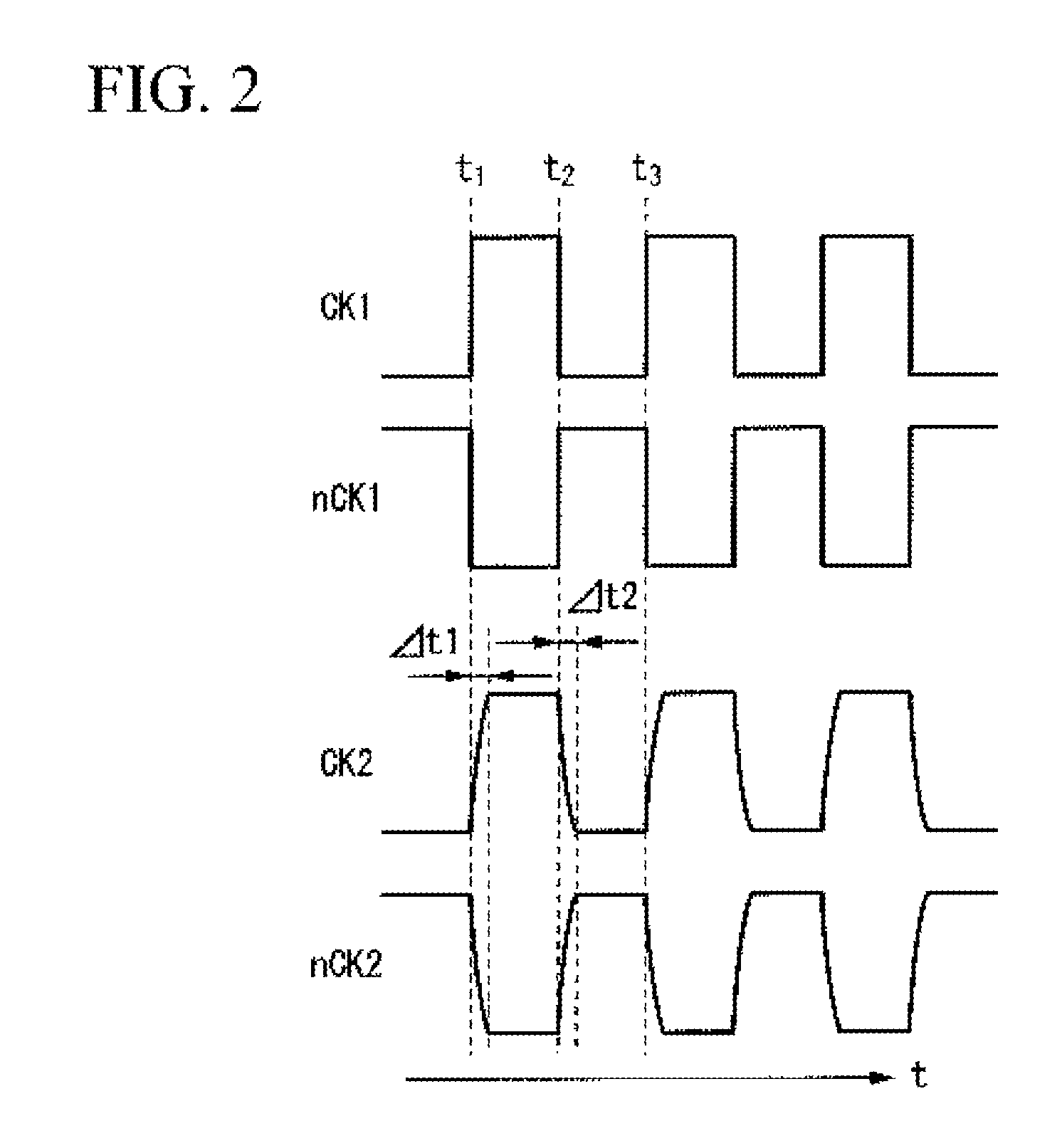Chopper stabilized amplifier
a stabilized amplifier and amplifier technology, applied in the direction of pulse automatic control, pulse technique, electronic switching, etc., can solve the problems of harmonic distortion in the output signal lpout(t), limited frequency characteristics, limited slew rate of operation amplifier circuit amp, etc., to reduce harmonic distortion and suppress glitching
- Summary
- Abstract
- Description
- Claims
- Application Information
AI Technical Summary
Benefits of technology
Problems solved by technology
Method used
Image
Examples
first preferred embodiment
[0058]Firstly, a first preferred embodiment of the present invention will be described. The structure of a chopper stabilized amplifier in accordance with the first preferred embodiment will now be described using FIG. 1. FIG. 1 is a circuit diagram illustrating a structure of a chopper stabilized amplifier in accordance with the first preferred embodiment of the present invention. In FIG. 1, units that are the same as in the conventional chopper stabilized amplifier CHOP_AMP shown in FIG. 10 are given the same descriptive symbols and a description thereof is omitted.
[0059]A chopper stabilized amplifier CHOP_AMP 1 shown in FIG. 1 differs from a conventional chopper stabilized amplifier in that a modulation / demodulation signal generation unit MOD_DEM is provided that supplies modulation signals CK1 and modulation signals nCK1 to a modulation circuit MOD, and supplies demodulation signals CK2 and demodulation signals nCK2 to a demodulation circuit DEMOD.
[0060]Hereinafter, the modulati...
second preferred embodiment
[0068]Next, a second preferred embodiment of the present invention will be described. The structure of a chopper stabilized amplifier in accordance with the second preferred embodiment will now be described using FIG. 4. FIG. 4 is a circuit diagram illustrating the structure of a chopper stabilized amplifier in accordance with the second preferred embodiment of the present invention. In FIG. 4, units that are the same as in the chopper stabilized amplifier CHOP_AMP 1 in accordance with the first preferred embodiment which is shown in FIG. 1 are given the same descriptive symbols and a description thereof is omitted.
[0069]A chopper stabilized amplifier CHOP_AMP 2 shown in FIG. 4 differs from the chopper stabilized amplifier CHOP_AMP 1 of the first preferred embodiment in that the switch units S1 to S4 and the switch units S1′ to S4′ are replaced specifically with the respective NMOS transistors M1 to M4 and the NMOS transistors M1′ to M4′, and in that the internal structure of the mo...
third preferred embodiment
[0081]Next, a third preferred embodiment of the present invention will be described. The structure of a chopper stabilized amplifier according to the third preferred embodiment will now be described using FIG. 6. FIG. 6 is a circuit diagram illustrating the specific structure of a low-pass filter LP which forms part of the chopper stabilized amplifier CHOP_AMP 2 shown in FIG. 4.
[0082]The low-pass filter LP includes an operational amplifier circuit AMP′ in which a non-inverting input terminal is connected to the wiring of the modulation signal CK1, an inverting input terminal is connected to the wiring of the modulation signal nCK1, an inverting output terminal is connected to the wiring of the demodulation signal nCK2, and a non-inverting output terminal is connected to the wiring of the modulation circuit CK2.
[0083]The characteristics of the operational amplifier circuit AMP′ which is used as a low-pass filter are desirably the same as the characteristics of the operational amplifi...
PUM
 Login to View More
Login to View More Abstract
Description
Claims
Application Information
 Login to View More
Login to View More - R&D
- Intellectual Property
- Life Sciences
- Materials
- Tech Scout
- Unparalleled Data Quality
- Higher Quality Content
- 60% Fewer Hallucinations
Browse by: Latest US Patents, China's latest patents, Technical Efficacy Thesaurus, Application Domain, Technology Topic, Popular Technical Reports.
© 2025 PatSnap. All rights reserved.Legal|Privacy policy|Modern Slavery Act Transparency Statement|Sitemap|About US| Contact US: help@patsnap.com



